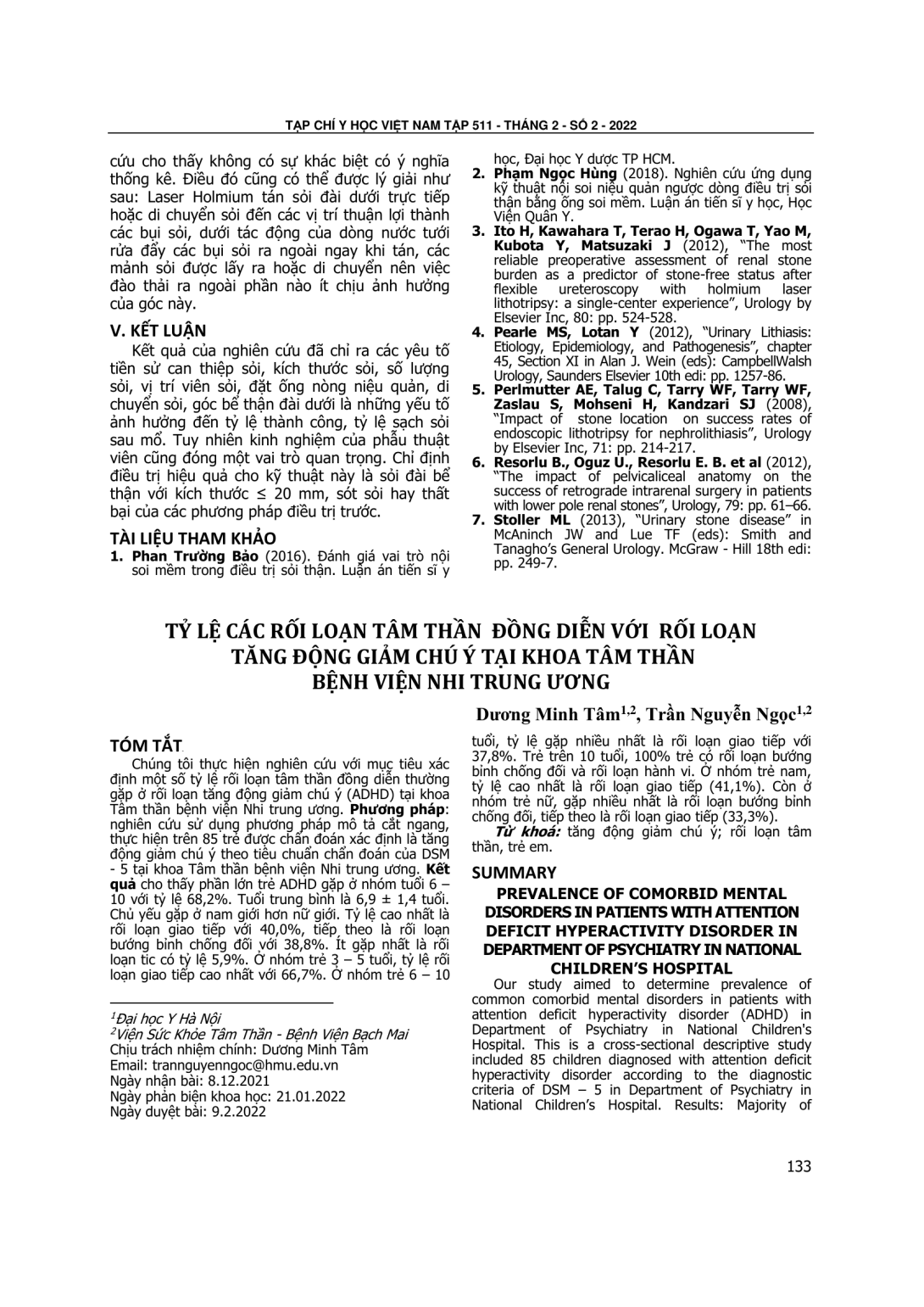
Xác định một số tỷ lệ rối loạn tâm thần đồng diễn thường gặp ở rối loạn tăng động giảm chú ý (ADHD) tại khoa Tâm thần bệnh viện Nhi trung ương. Phương pháp: nghiên cứu sử dụng phương pháp mô tả cắt ngang, thực hiện trên 85 trẻ được chẩn đoán xác định là tăng động giảm chú ý theo tiêu chuẩn chẩn đoán của DSM - 5 tại khoa Tâm thần bệnh viện Nhi trung ương. Kết quả cho thấy phần lớn trẻ ADHD gặp ở nhóm tuổi 6 – 10 với tỷ lệ 68,2%. Tuổi trung bình là 6,9 ± 1,4 tuổi. Chủ yếu gặp ở nam giới hơn nữ giới. Tỷ lệ cao nhất là rối loạn giao tiếp với 40,0%, tiếp theo là rối loạn bướng bỉnh chống đối với 38,8%. Ít gặp nhất là rối loạn tic có tỷ lệ 5,9%. Ở nhóm trẻ 3 – 5 tuổi, tỷ lệ rối loạn giao tiếp cao nhất với 66,7%. Ở nhóm trẻ 6 – 10 tuổi, tỷ lệ gặp nhiều nhất là rối loạn giao tiếp với 37,8%. Trẻ trên 10 tuổi, 100% trẻ có rối loạn bướng bỉnh chống đối và rối loạn hành vi. Ở nhóm trẻ nam, tỷ lệ cao nhất là rối loạn giao tiếp (41,1%). Còn ở nhóm trẻ nữ, gặp nhiều nhất là rối loạn bướng bỉnh chống đối, tiếp theo là rối loạn giao tiếp (33,3%).
Our study aimed to determine prevalence of common comorbid mental disorders in patients with attention deficit hyperactivity disorder (ADHD) in Department of Psychiatry in National Children's Hospital. This is a cross-sectional descriptive study included 85 children diagnosed with attention deficit hyperactivity disorder according to the diagnostic criteria of DSM – 5 in Department of Psychiatry in National Children’s Hospital. Results: Majority of children with ADHD were found in the age group of 6-10 years with the rate of 68.2%. The mean age was 6.9 ± 1.4 years old. Boys were seen more than girls. The most common was communication disorder with 40.0% of patients, followed by oppositional defiant disorder with 38.8%. The least common was tic disorder:5.9%. In the group of children under 6 years old, the rate of communication disorders was highest with 66.7%. In the group of children from 6 to 10 years old this disorder was37.8%. In group over 10 years old, 100% of children have oppositional defiant disorder or conduct disorder. The most common disorder among boys was communication disorder (41.1%), while among girls, oppositional defiant disorder was highest, followed by communication disorder (33.3%).
- Đăng nhập để gửi ý kiến
